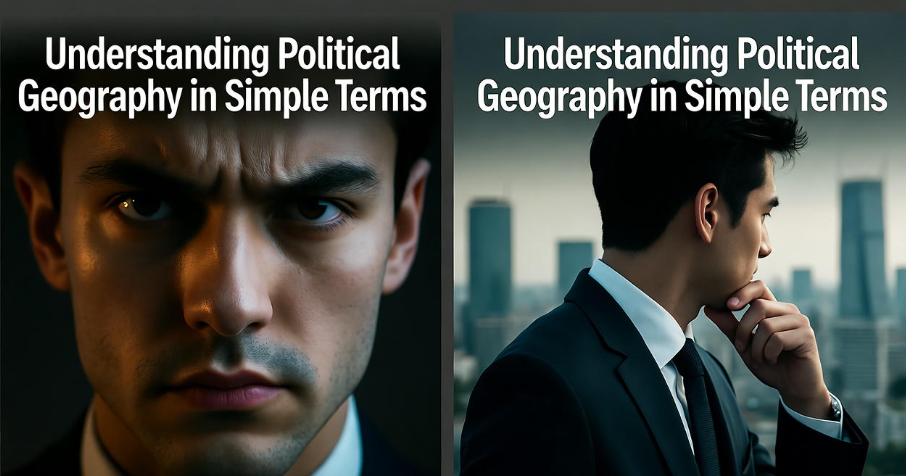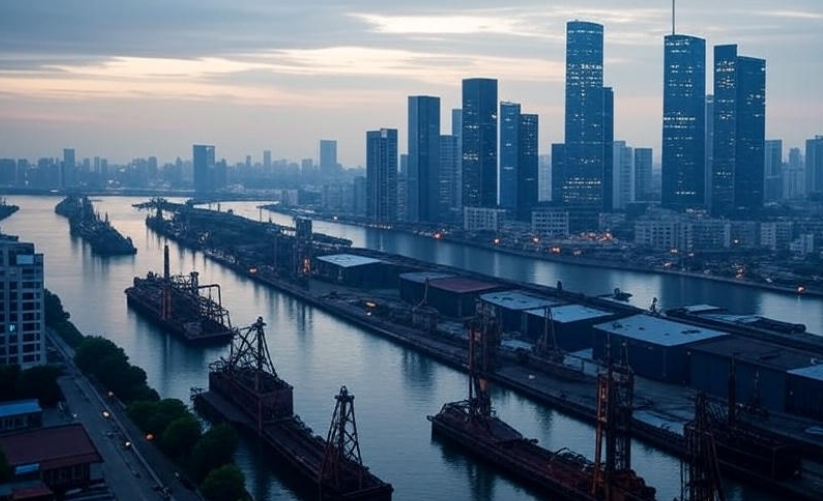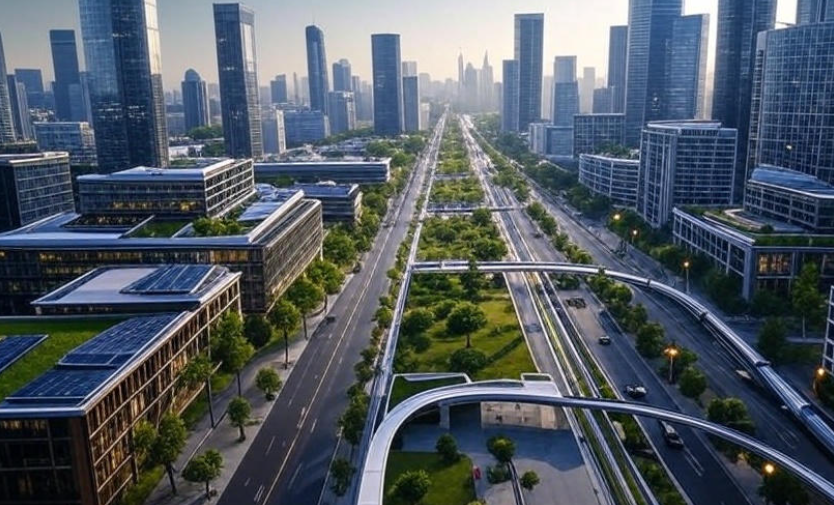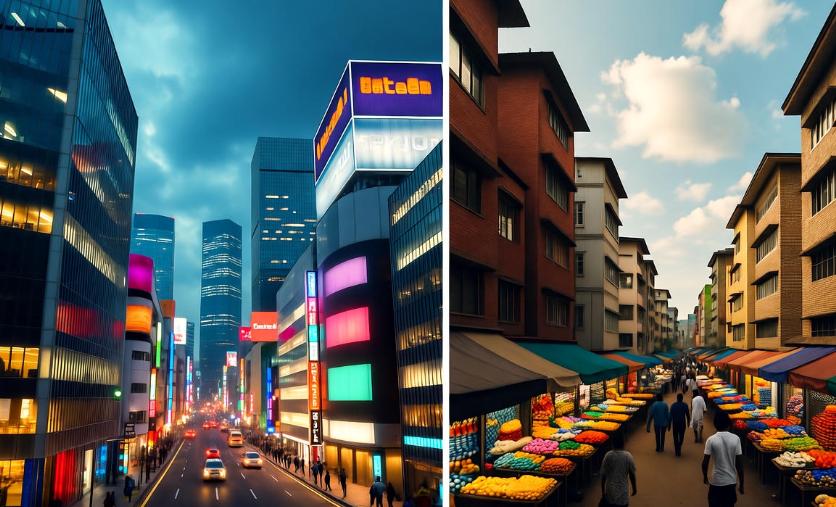Have you ever wondered why the world is divided into countries, states, or even tiny villages ️? Or why some borders look straight while others twist and turn like a river? Well, that’s where political geography comes in. Let’s break it down in a way that’s easy to understand — no heavy academic words, just simple explanations.
What is Political Geography?
In the simplest form, political geography is the study of how people organize space and territory on Earth.
It’s about who controls what land, how decisions are made, and why borders exist the way they do.
You can think of it like this: imagine Earth as one big neighborhood. Each country is a house , each state is a room, and the cities are the furniture inside. Political geography studies how all these “houses” and “rooms” are arranged and who gets to decide the rules.
Why Political Geography Matters
Political geography is not just about maps or borders. It affects how people live, work, and even how safe they feel.
Here’s why it matters:
| Reason | Description |
|---|---|
| Identity | It shapes national pride, culture, and language. |
| ⚖️ Power | It shows how governments use land to gain power and control. |
| Economy | Borders affect trade, taxes, and jobs. |
| Conflict & Peace | Many wars and peace treaties are based on political geography. |
| Global Relations | Countries form alliances or rivalries depending on geography. |
So, every time you look at a map, remember: it’s not just about land — it’s about people, power, and politics too.
How Borders Are Created
Borders don’t just appear magically ✨. They are drawn based on history, culture, wars, or natural features like mountains and rivers.
Here are the main types of borders:
| Type of Border | Example | Description |
|---|---|---|
| Natural Border | The Himalayas between India and China | Made by nature (mountains, rivers, deserts). |
| Geometric Border | The line between USA and Canada | Straight lines made by humans, often using latitude and longitude. |
| Cultural Border | Between Spain and France | Based on language, religion, or traditions. |
| Political Border | Between North & South Korea | Created due to government or political agreements. |
Borders tell stories. Some are peaceful and open, while others are closed and guarded. Each one reflects history and relationships between nations.
The Idea of Territory
A territory is simply an area of land controlled by someone — a country, a group, or even an individual.
Think of your home as your territory . You control who enters and what happens inside. Countries do the same thing, just on a bigger scale.
There are three key parts of a territory:
-
Land – The physical area controlled.
-
People – The citizens who live there.
-
Government – The authority that makes and enforces the rules.
Every country protects its territory because it’s tied to national identity, resources, and security.
The Role of Power in Geography
Politics is basically the art of power — and geography often decides who has it.
For example, countries with oceans and ports (like Japan or the UK) often have strong trade networks .
Those with mountains or deserts might have natural defenses but limited communication with neighbors.
A simple rule in political geography is:
“The land you have often shapes the power you get.”
Here’s a quick comparison:
| Type of Region | Advantage | Disadvantage |
|---|---|---|
| Coastal Country | Easier trade, navy access | Risk of invasions |
| Landlocked Country | Easier to defend | Harder trade routes |
| Mountainous Region | Natural protection | Hard to build cities |
| Flat Plains | Good for farming | Easy to invade |
How Maps Show Political Power
When you look at a world map, every color or line tells a story.
Each border represents a decision, a treaty, or sometimes even a war. Maps are not just pictures — they are political documents .
Some maps also show:
-
Voting patterns
-
Ethnic groups
-
Resource distribution
-
Influence zones (like NATO or the EU)
Maps can change over time. A country that existed 100 years ago might not exist today.
For example, Yugoslavia once was one big country but later split into smaller ones like Serbia, Croatia, and Slovenia.
Geopolitics: When Geography Meets Global Power
Geopolitics is a big word that simply means how geography affects politics between countries.
For instance:
-
Russia’s vast land makes it powerful but hard to manage.
-
The Middle East’s oil makes it very important for world energy .
-
The USA’s location gives it both Atlantic and Pacific access for trade.
Geopolitics is like a global chess game ♟️ — every country moves based on its position on the board.
Examples of Political Geography in Real Life
-
The European Union (EU):
Countries working together for trade, security, and freedom of movement. Borders still exist but are softer. -
Brexit:
The UK leaving the EU changed maps, laws, and even people’s daily lives. A big reminder that geography and politics always connect. -
The Israel–Palestine Conflict:
A long dispute over land and control — a direct example of how political geography can influence peace and war. -
China and Taiwan:
Geography plays a huge role in their political tension, involving territory, power, and recognition. -
The Arctic:
Countries like Russia, the US, and Canada are competing for control over melting ice regions because of new shipping routes and oil.
Political Geography and Everyday Life
You might not think about it often, but political geography affects your life daily:
-
The passport you carry
-
The taxes you pay
-
The currency you use
-
The internet rules in your country
-
Even the side of the road you drive on
All these are decisions shaped by the political geography of your nation.
-
Curious about unique world borders? Read more: How Countries Get Their Unique Borders Explained
Fun Facts About Political Geography
| Fact | Explanation |
|---|---|
| The world has 195 countries | 193 are in the UN, plus the Vatican & Palestine. |
| Some borders are only a few meters long | Like Botswana-Zambia (only 150 meters). |
| There’s a village shared by two countries | Baarle, between Belgium and the Netherlands. |
| The world’s longest border | Between Canada and the United States — over 8,800 km! |
| Some borders run through houses | In Europe, some homes literally lie between two nations. |
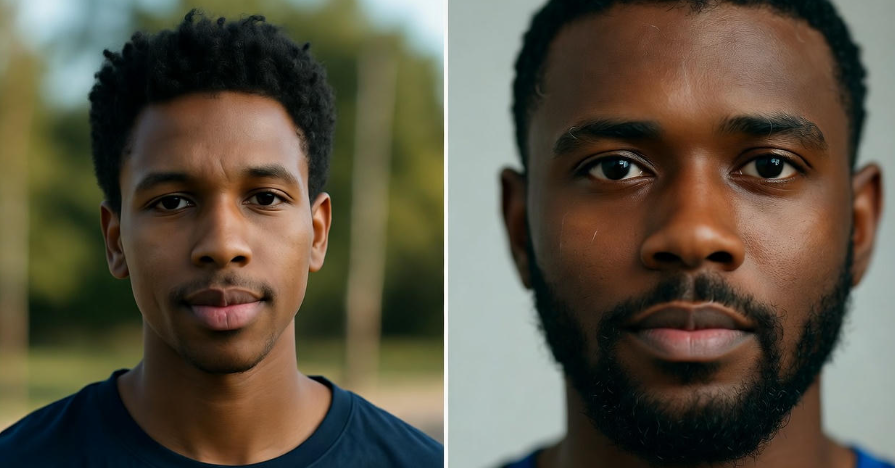
Challenges in Political Geography
Political geography also deals with tough issues:
-
Border disputes – Who owns what land?
-
Migration – People moving between countries.
-
Globalization – Companies and technology connecting the world.
-
Climate change – Rising seas changing coastlines and borders.
-
Nationalism – People wanting their own separate nations.
All these problems show that geography is not just physical — it’s emotional and political too.
The Future of Political Geography
As technology grows, borders are becoming less visible but still powerful.
Online spaces have created new “digital territories.” For example, social media platforms or even online currencies cross all borders .
In the future, political geography might include:
-
Cyber borders for data protection
-
Space territories as countries explore Mars
-
Virtual nations where people form online communities with shared rules
Crazy, right? But that’s the next step in how humans organize their world.
Simple Summary Table
| Concept | Meaning | Example |
|---|---|---|
| Political Geography | Study of politics and space | Why borders exist |
| Territory | Area controlled by a group | Country or state |
| Border | Dividing line between areas | India–Pakistan border |
| Geopolitics | How geography affects power | Oil in the Middle East |
| Nation | People with shared identity | Japan or France |
Final Thoughts
Political geography is like a mirror of how humans share the planet.
It tells us who we are, where we belong, and how we live together — or sometimes, why we fight.
Understanding it helps us make sense of wars, peace deals, alliances, and even trade.
The next time you see a map, look beyond the lines. Each border, color, and name hides a story — sometimes beautiful, sometimes tragic, but always fascinating.
FAQs (Frequently Asked Questions)
Q1. What is political geography in one sentence?
Political geography studies how humans organize and control space on Earth through borders, nations, and governments.
Q2. How is political geography different from physical geography?
Physical geography deals with landforms, climate, and nature , while political geography focuses on human control and boundaries.
Q3. Why do borders change?
Borders change because of wars, treaties, independence movements, or natural changes like river shifts.
Q4. Can political geography affect daily life?
Absolutely! It decides your nationality, laws, taxes, and even your freedom to travel ✈️.
Q5. What is an example of political geography today?
The Russia–Ukraine conflict or Brexit are strong modern examples.
Q6. Who studies political geography?
Geographers, diplomats, politicians, and even students who want to understand world politics better.
In Short:
Political geography is the invisible thread that connects land, power, and people.
Once you understand it, the world map starts to make a lot more sense — not just as shapes and colors, but as a living story of humanity.

